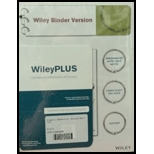
Interpretation: For the given set of compounds, the net molecular dipole moment has to be indicated.
Concept Introduction: Dipole moment is the measure of net molecular polarity. Dipole moment can be determined experimentally and its value can give an idea of the polar character of a molecule. It is a vector quantity as it has a direction as well as magnitude.
The direction of dipole moment is usually represented by an arrow  pointing from positive end towards the negative end. The sum of all vectors in a compound is called the molecular dipole moment. It can be given by considering both magnitude and the direction of each individual dipole moment involved in that compound.
pointing from positive end towards the negative end. The sum of all vectors in a compound is called the molecular dipole moment. It can be given by considering both magnitude and the direction of each individual dipole moment involved in that compound.
If dipole moments of the individual bonds are equal in magnitude but in opposite direction, there is no net molecular dipole moment. If dipole moments of the individual bonds aren’t in opposite direction, there is a net molecular dipole moment.
According to VSEPR (Valence Shell Electron Pair Repulsion) theory, each molecule gets a unique structure. That structure is explained by considering steric number of that molecule. The steric number is the combination of both number of σ-bonds and number of lone pairs involved in a particular molecule.
σ-bonds are formed by the mutual sharing of electrons between the two atoms. As a result, bond between two atoms is formed. This type of bond is called covalent bond. In this process, bonding electron pairs are involved. Non-bonding electrons are not involved in the bond formation. They are called lone pairs.
The geometry of the central atom will be determined by counting the steric number followed by the hybridization state of that central atom and finally electronic arrangement of atoms in space.
If the steric number is 4, the central atom has sp3 hybridized and the electronic arrangement of atoms in space (i.e. geometry) will be tetrahedral. If the steric number is 3, the central atom has sp2 hybridized and the electronic arrangement of atoms in space (i.e. geometry) will be trigonal planar. If the steric number is 2, the central atom has sp hybridized and the electronic arrangement of atoms in space (i.e. geometry) will be linear.
To find: Decide the large dipole moment value for a compound in a given pair of compounds
Want to see the full answer?
Check out a sample textbook solution
Chapter 1 Solutions
Organic Chemistry 2nd Edition Binder Ready Version with WileyPLUS Card Set (Wiley Plus Products)
 ChemistryChemistryISBN:9781305957404Author:Steven S. Zumdahl, Susan A. Zumdahl, Donald J. DeCostePublisher:Cengage Learning
ChemistryChemistryISBN:9781305957404Author:Steven S. Zumdahl, Susan A. Zumdahl, Donald J. DeCostePublisher:Cengage Learning ChemistryChemistryISBN:9781259911156Author:Raymond Chang Dr., Jason Overby ProfessorPublisher:McGraw-Hill Education
ChemistryChemistryISBN:9781259911156Author:Raymond Chang Dr., Jason Overby ProfessorPublisher:McGraw-Hill Education Principles of Instrumental AnalysisChemistryISBN:9781305577213Author:Douglas A. Skoog, F. James Holler, Stanley R. CrouchPublisher:Cengage Learning
Principles of Instrumental AnalysisChemistryISBN:9781305577213Author:Douglas A. Skoog, F. James Holler, Stanley R. CrouchPublisher:Cengage Learning Organic ChemistryChemistryISBN:9780078021558Author:Janice Gorzynski Smith Dr.Publisher:McGraw-Hill Education
Organic ChemistryChemistryISBN:9780078021558Author:Janice Gorzynski Smith Dr.Publisher:McGraw-Hill Education Chemistry: Principles and ReactionsChemistryISBN:9781305079373Author:William L. Masterton, Cecile N. HurleyPublisher:Cengage Learning
Chemistry: Principles and ReactionsChemistryISBN:9781305079373Author:William L. Masterton, Cecile N. HurleyPublisher:Cengage Learning Elementary Principles of Chemical Processes, Bind...ChemistryISBN:9781118431221Author:Richard M. Felder, Ronald W. Rousseau, Lisa G. BullardPublisher:WILEY
Elementary Principles of Chemical Processes, Bind...ChemistryISBN:9781118431221Author:Richard M. Felder, Ronald W. Rousseau, Lisa G. BullardPublisher:WILEY





